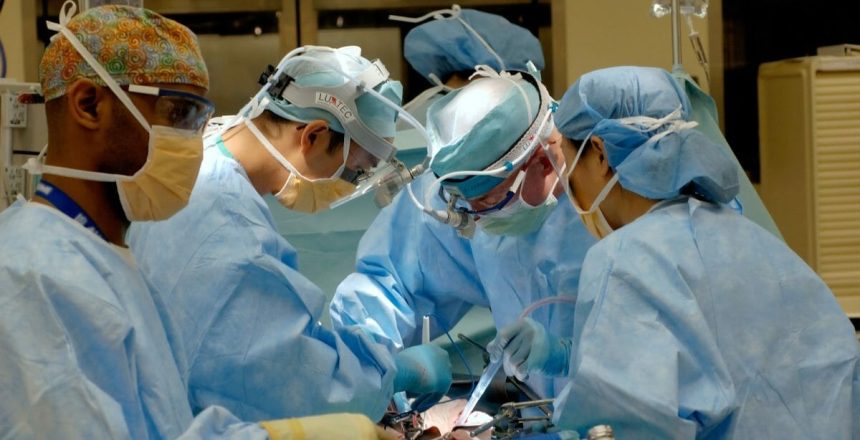The uniforms that doctors and nurses wear to protect themselves are a more recent invention than you might think.
Before a deadly pandemic struck, there were few sanitary protections even for surgeons. Afterwards, scrubs became a mandatory form of dress in hospitals around the world.
To find the best nursing, dental, medical, and surgical scrubs go to infectious.com.au. You’ll find comfortable, professional, and stylish designs for any healthcare provider.
What Are Scrubs?
If you have ever been in a hospital, you have probably noticed that there is a plain and standard uniform worn by most of the doctors and nurses. These are called scrubs, and they are standard in healthcare settings around the world.
We call them “scrubs” because they are put on when doctors and nurses “scrub in”, by washing their hands carefully and getting dressed in clean uniforms.
Scrubs are functional uniforms that allow plenty of range of motion, are not distracting or flashy, and are made tougher than most clothing so that they can be washed repeatedly at high temperatures to sterilize them. They are often a shade of blue or green, although today scrubs come in a wide range of colours.
Surgical scrubs are in a solid colour, while non-surgical scrubs are a little more diverse in their designs. Although scrubs are not exactly designed for the red carpet, they have improved in style and comfort significantly over the years. Today, doctors and nurses in scrubs can be stylish, comfortable, and safe.
The most important purpose of scrubs is to protect healthcare professionals from cross-contamination of bodily fluids and infections. Scrubs aren’t made of the same kind of thin cotton we make other clothes and uniforms from. They must be thick and impenetrable enough to keep bodily fluids from seeping through and reaching the doctor or nurse’s skin.
Why Are Scrubs Necessary?
Without scrubs, there would be some pretty major issues in every hospital.
The first is cross-contamination and infection. We understand now that bodily fluids can cause infection and disease even through simple skin contact. We also know how easily infection can be transferred from one person to another, with minimal contact.
Scrubs protect the wearer against bodily fluids so that they don’t contract the diseases or spread the infections that they are treating in patients. The plain colours of surgical scrubs make it clear when they are dirty, and where, so they can be sterilized. Without scrubs, infection would spread much more quickly because doctors and nurses would come into contact with contaminated clothes and continue to spread the disease or infection without necessarily knowing it.
Scrubs are also just essential practical uniforms for a medical workforce that must be quick, flexible, and ready under stress. Scrubs allow for a range of mobility and come with large pockets.
How Did a Pandemic Lead to the Use of Scrubs?
In the early part of the 20th century, you didn’t see so many scrubs in hospitals and operating rooms around the world. Although medical knowledge was growing exponentially at the time, there was still insufficient knowledge about the causes and transmission of diseases. Few imagined that surgeons who operate on multiple patients a day could be cross-contaminating them.
It took a pandemic to wake people up and get hospitals to change procedures. In this case, we’re not talking about the COVID-19 pandemic, but one more than a century earlier in 1918 – the Spanish Flu.
The Spanish flu, also known as the Great Influenza pandemic, struck as the First World War was ending, and caused a mind-boggling amount of death and despair, affecting around 1/3 of humans on the planet with casualties numbering somewhere between 50 million and 100 million. During this time, doctors began to wear surgical masks to protect themselves from their patients, and the modern concepts of medical hygiene were born.
By the 1940s and 50s, it was routine for doctors and surgeons to wear white scrubs. However, these made it hard to see in operating theatres, so the colour was eventually changed to green, which allowed surgeons to better see the colours of the human body.
Before the invention and popularization of scrubs, many surgeons were proud of having their clothes covered in blood and bodily fluids. Being a surgeon was a high-class profession, and being covered in blood meant that you were working a lot! Since the 1918 Spanish Flu pandemic, our understanding of germs, bacteria, and infectious transmission has grown. We can now see that these well-meaning surgeons were likely spreading infections and diseases among their patients.
Today, scrubs are standard in hospitals around the world because they work. They are comfortable, stylish, and practical, and they protect the wearer against infectious bodily fluids. The 1918 pandemic was a horrific event for the world, but the silver lining for modern medicine is that we learned a great deal about how germs are spread, and how we can protect ourselves with scrubs.
